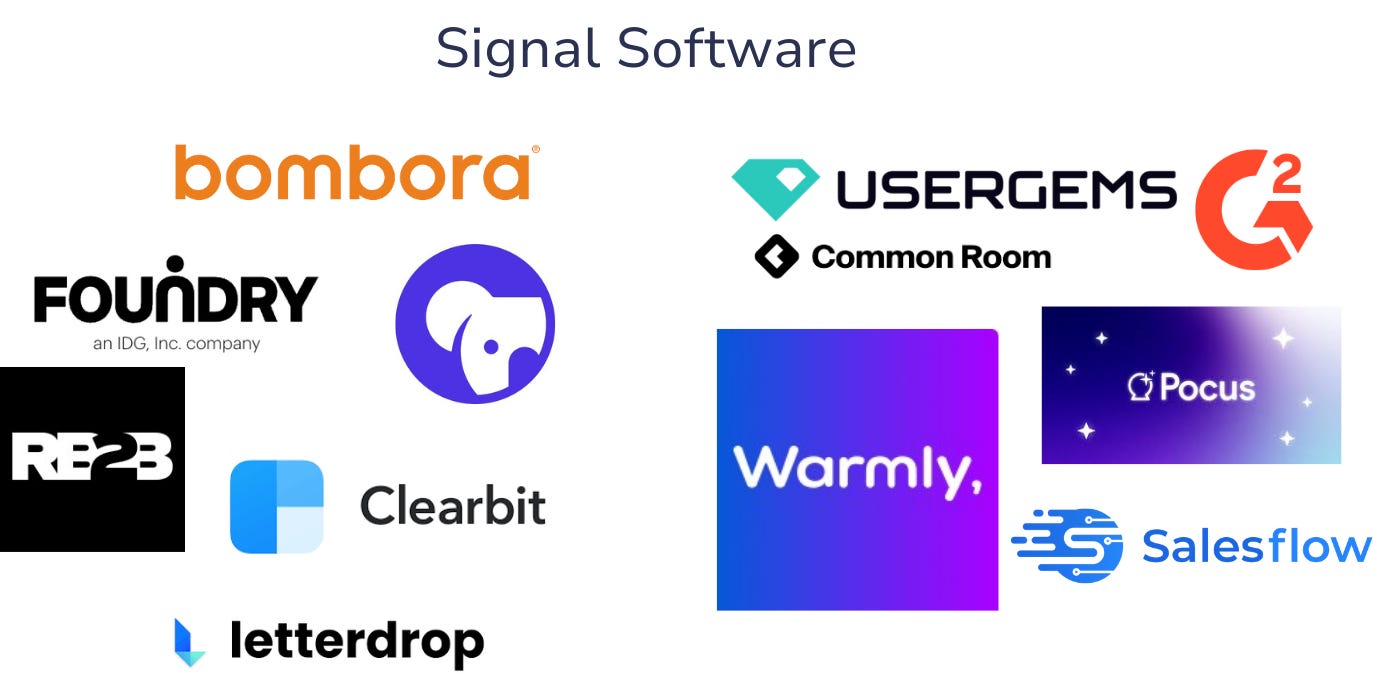👋 Hi, it’s Kaylee Edmondson and welcome to Looped In, my weekly newsletter exploring demand gen and growth frameworks in B2B SaaS. Subscribe to join 1k+ readers who get Looped In delivered to their inbox every Sunday.
If you’re new here, welcome! You’re joining in the midst of me ranting about the new regime that’s starting to shake up ABM.
This era is MarTech’s version of cutting the cord. 6sense, Demandbase, Terminus, and others have quickly become our Comcast, Dish, DirecTV. The parallels are uncanny. Marketers have found themselves locked into long, pricey contracts, and they’re only using a small part of the offerings.
Now there are new, more tailored, and affordable solutions gaining traction to meet the market demand. Think of these as the streaming solutions – if we’re going to continue down the cord cutting analogy.
In last week’s edition we got into account selection, and how to do it better.
And I really believe the net of account selection is to identify and inform your best sets of signals. Those signals then fuel your plays.
So, let’s get into signals. As you can imagine, not all signals are created equal. And…there are hundreds of potential signals to sort through and prioritize.
But in order to access these signals (amongst the hundreds of others), you’ll need to start building a signal-based stack. And this is where the great unbundling is starting to look just like your recurring list of streaming subscriptions. Growing longer by the day. But here’s a look at a few players I’ve either used personally to draw signals, or have heard positive feedback from peers on.

These tools will help identify all types of signals. Signal-based plays are just as they sound. In this new era of GTM, we’ll use signals to identify who is visiting your website (and which pages), if they’re comparing your brand to the competition in head to head reviews, if they’re searching for key terms related to your offering/service, engaging with your content on LinkedIn, etc.
The warning is that in this new era, we’re going to very quickly enter a phase of true signals vs noise. Being able to prioritize signals that matter is how you’ll build new-age ABM that actually lands.
First-party signals: This is data you own that was collected from a user engaging with your product or a prospect engaging with your brand. Examples include customer data from the CRM, product usage data from the data warehouse, marketing engagement data like content downloads or event attendees, community engagement, and more.
Third-party signals: This is data from a 3rd party provider, typically a data vendor like Clearbit, G2, Bombora, and others. Some of these 3rd party vendors explicitly sell “intent” to help you understand where there is a buying signal within your target accounts. Other providers offer firmographic data, funding data, tech stack, etc, that could help you infer intent or buying signals.
I’ve created a preliminary Signal Intent Matrix to help us all think through how bringing these signals to life might look like within your organization.
Back with that on next week’s drop!
See ya then,
Kaylee







Spot on. I’d add the sweet spot is the overlap between 1st and 2nd party signals. 3p is tablestakes but not a differentiator.